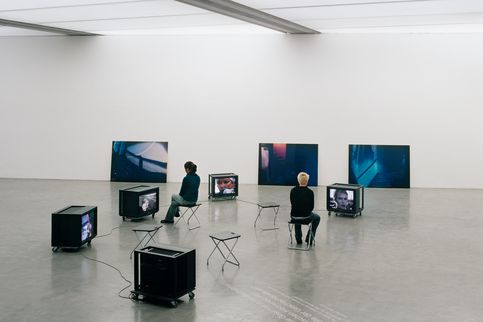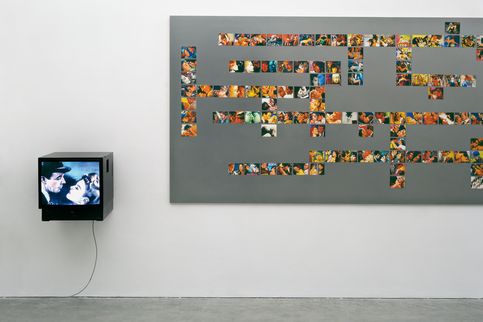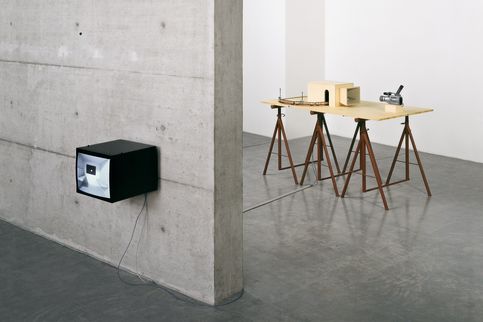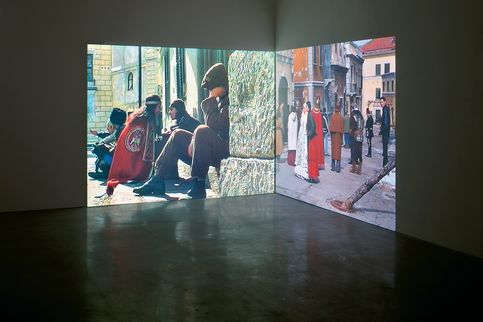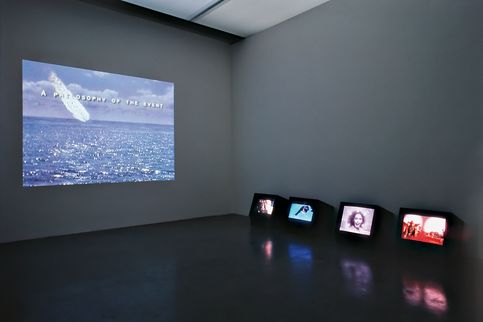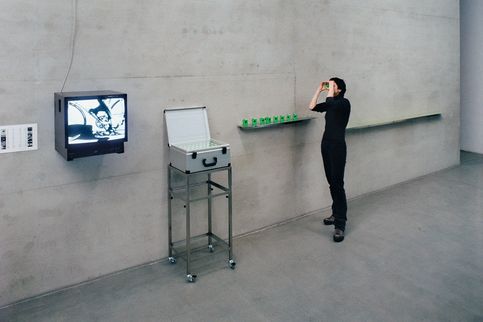Cinema like never before
Guest Curators: Antje Ehmann and Harun Farocki
Curatorial Assistant, Exhibition production: Cosima Rainer
Works by Hartmut Bitomsky, Gustav Deutsch, Isabell Heimerdinger, Astrid Küver, Constanze Ruhm, Krassimir Terziev, Nadim Vardag, Klaus Wyborny, Stephen Zepke as well as Antje Ehmann and Harun Farocki.
Film pictures in exhibition spaces are longest been taken for granted. Reason enough to more closely examine the origin of these pictures. What is seen in cinema and in which way? How does the medium of film function and what rules does it follow? The author and filmmaker Harun Farocki and the film academic and artist Antje Ehmann had been invited by the Generali Foundation to use the exhibition space for cinema and film analysis.
"Cinema like never before" was to be perceived as a cinematographic laboratory. Film was brought into the exhibition space without simulating a situation of cinema. Similar to an editing room, takes were weighed and evaluated, cutting frequencies established, and principles of structure and composition analyzed. Archetypes and recurring patterns in film history were addressed and cinema’s technological determinants and conditions of perception are investigated. The exhibition brought together analytical and artistic practices that further contemplated cinema in the art space and contributed to a different understanding of film.
As opposed to other film exhibitions, it was not the predominant issue here to celebrate the myth of cinema. Cinema like never before was a film exhibition that does not show complete films, but elucidated film language by means of photographic series, slide sequences, and sequential montages. With photographs, stills and moving images, the exhibition intended to provide a chance to study films as it is otherwise done in cutting rooms and seminars, but always with a great deal of explanation. In contrast, the idea here was to detach analyses of images from a discursive framework, instead allowing them to unfold by virtue of conceptual sequences of images.
Numerous contributions of the artists, filmmakers and authors were specially developed for the exhibition. Among them an installation by Hartmut Bitomsky, one of Germany’s most prominent documentary filmmakers, which presented death as an axiom of cinema.
The exhibition was part of a joint project with the Austrian Film Museum. In March 2006 the Film Museum displayed works of Harun Farocki as well as Carte Blanche, a series conceived by Antje Ehmann and Harun Farocki dealing with the topic of film.

